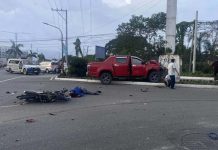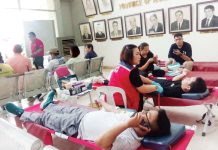
WITH THE festive season approaching, the Department of Health (DOH) in Western Visayas has already launched its annual “Iwas Paputok” campaign to ensure public safety during holiday celebrations. This early start is crucial, especially as data from previous years reveals a disturbing trend of increasing fireworks-related injuries in the region. In 2023 alone, Western Visayas recorded 294 cases, including a tragic fatality, marking a five-year high. From Iloilo to Bacolod and other parts of the region, injuries continue to climb, underscoring the need for an all-hands-on-deck approach to tackle these preventable incidents.
The “Iwas Paputok” campaign, part of the broader “Ligtas Christmas Campaign”, not only raises awareness but actively encourages alternatives to dangerous firecrackers, promoting safer noise-making methods such as banging pots or using horns. However, data suggest that a few weeks of awareness each year may not be enough to alter the mindset ingrained in holiday traditions. A consistent, year-round campaign is essential if we hope to protect families and prevent the toll on health facilities that these injuries bring.
Western Visayas has a responsibility to lead by example. The upward trend in firecracker injuries — from 115 in 2019 to nearly 300 in 2023 — represents lives forever changed by avoidable accidents. Many of these injuries result in lifelong disabilities or heavy healthcare costs, not to mention the stress placed on our hospitals, which already face capacity challenges during peak seasons. A year-round campaign could focus on integrating firework safety education into community events, school programs, and media broadcasts, gradually shifting public preference towards safer practices.
Local government units (LGUs) and communities can amplify the DOH’s efforts by strengthening local ordinances and conducting awareness drives outside of the holiday season. Additionally, partnering with schools can instill safety values in younger generations, creating a ripple effect that reaches families across the region.
Preventive measures must also include strict regulation of firecracker sales and a crackdown on illegal, unlicensed products that often end up causing the most harm. Enforcing these laws consistently could drastically reduce the availability of dangerous firecrackers and help change the public mindset toward safer celebrations.
We can reframe safety as part of tradition — prioritizing the well-being of every family member. Through early, sustained, and comprehensive safety education, we can transform the holiday experience into one of joy and health. This season, let’s choose safety over tradition, ensuring a holiday filled with joy, not regret. Each injury avoided translates to a life safeguarded from irreversible harm.







